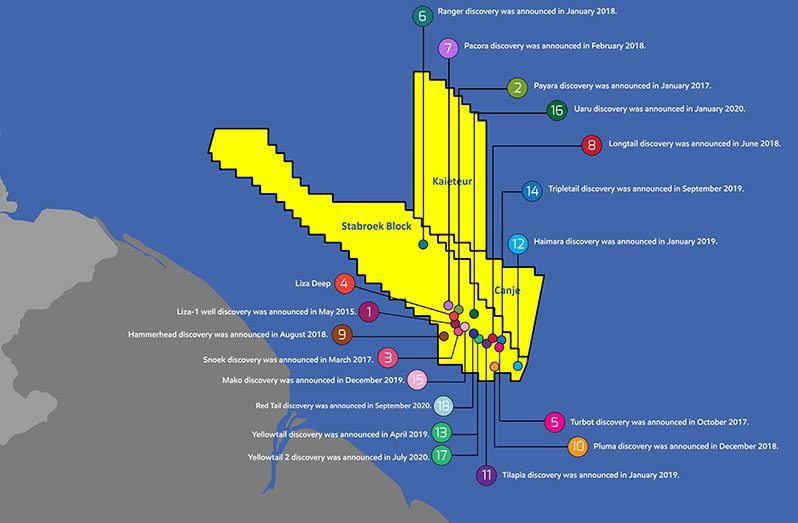–will be plugged, abandoned, as attention turns to Sapote-1 well
EVEN as the prospects remain promising at the Canje Block, offshore Guyana, the latest well drilled there by ExxonMobil, Jabillo-1, came up dry after being drilled down to 6,475 meters.
Westmount Energy, a holding company for a group of subsidiaries which operate in the oil-and-gas-related industries, reported that it has been informed by JHI Associates Inc. that the Jabillo-1 well on the Canje Block reached its target depth without encountering commercial hydrocarbons.
The Jabillo-1 well was drilled down to 6,475 meters in 2,903 meters of water by the Stena Carron drillship.
Considering the outcome of this operation, the well will be plugged and abandoned, as operator, ExxonMobil, turns its attention to the largest prospect to date at the Canje Block, the Sapote-1 well, located about 100 kilometers away from Jabillo-1.
According to Westmount Energy, Sapote-1 is located closer to Exxon’s upper cretaceous discoveries in the Stabroek Block. It is described as an independent multi-layer prospect, which will evaluate several upper cretaceous targets.
It is anticipated that Sapote-1 will be spudded in mid-August, using the Stena DrillMAX drillship, with results due to follow in October.
While the operator of this project is ExxonMobil, which holds a 35 per cent interest in the Canje Block, the other shareholders are Total, with 35 per cent; JHI Associates, with 17.5 per cent; and Mid-Atlantic Oil and Gas Inc. with 12.5 per cent.
Considering the positive prospects of the Canje Block, experts believe it might become more lucrative than the Stabroek Block, where 20 discoveries have so far been made.
According to Rystad Energy, ExxonMobil, in addition to the Canje Block, will be “firming up” resources in the south-eastern part of the Stabroek Block, where deeper plays have been observed underneath the existing discoveries.
The Stabroek Block is 6.6 million acres (26,800 square kilometers), with current discovered recoverable resources estimated at more than nine billion oil-equivalent barrels.
ExxonMobil’s first offshore Guyana project at the Stabroek Block, Liza Phase One, began producing in late 2019, well ahead of the industry’s average for development time. Liza Phase Two remains on track to begin producing oil by early 2022.
Liza Phase Two will produce up to 220,000 barrels of oil per day at peak rates, using the Liza Unity FPSO. Late last year, the oil giant, following an agreement with the Government of Guyana, decided to proceed with the Payara field development offshore Guyana.
Payara is ExxonMobil’s third project in the Stabroek Block, and is expected to produce up to 220,000 barrels of oil per day, after start-up in 2024, using the FPSO vessel. The US$9 billion development will target an estimated resource base of about 600 million oil-equivalent barrels.
According to Westmount Energy, Guyana, with its positive prospects and vast potential, remains one of the few areas of “blue-chip” interest in high-impact exploration. Investopedia defines blue-chip stocks as secure investments, because they pay out dividends, as well as consistently and steadily grow over time.
It was reported recently that Guyana’s role in the global petroleum industry could be bigger than it appears on the surface, as an analysis done by global energy research and consultancy group, Wood Mackenzie, shows that the country is among five nations which will produce most of the remaining deep-water oil resources.




.png)









